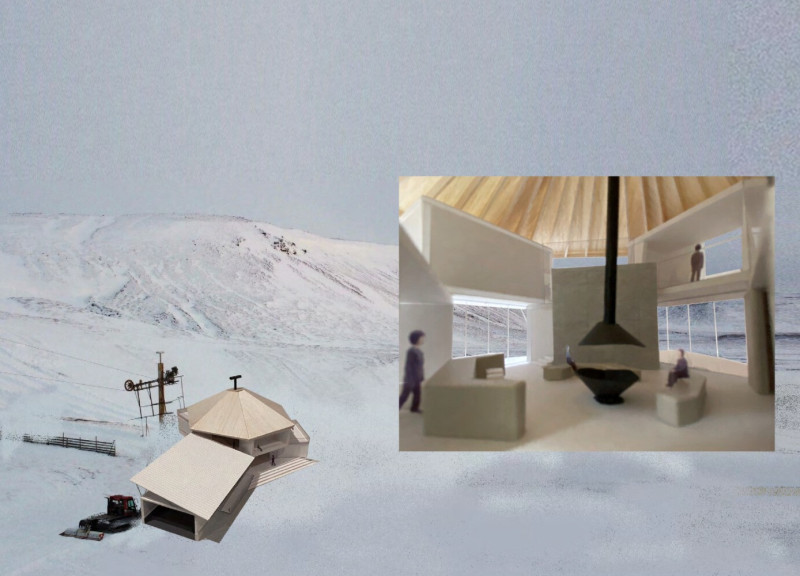5 key facts about this project
At its core, the building functions as a multipurpose facility designed to meet various community needs. It accommodates spaces for education, recreation, and social interaction, making it a hub of activity for its users. The design approach emphasizes flexibility, allowing for the adaptability of spaces to host different types of events, be it workshops, community gatherings, or classes. This versatility is critical, as it encourages engagement and caters to the evolving demands of the community.
The architectural design is marked by its unique spatial organization. The arrangement of rooms and communal areas forms a cohesive flow, guiding users through the space while encouraging exploration and interaction. Large windows punctuate the facade, not only providing ample natural light but also establishing a visual connection to the surroundings. This relationship with the outdoors enables individuals to feel more connected to nature, enhancing their overall experience within the building.
Materiality in this project plays a crucial role in defining its character and sustainability. Constructed primarily from locally sourced materials such as reclaimed wood, natural stone, and eco-friendly concrete, the building not only reduces its environmental footprint but also blends seamlessly with the local architectural vernacular. The use of these materials fosters a sense of authenticity and serves to ground the structure within its geographical context. The selection of finishes and textures promotes warmth and hospitality while ensuring durability and low maintenance.
In addition to material choices, the architectural design incorporates strategies aimed at energy efficiency. Features such as green roofs and solar panels reflect a growing trend in architecture to prioritize sustainability. These elements are not just functional; they are also educational, informing users about the importance of environmental stewardship. The design incorporates landscaping elements that further enhance the ecological impact, using native plant species to minimize water usage and support local biodiversity.
The visual language of the building is distinct, characterized by clean lines and an uncomplicated silhouette that harmonizes with its surroundings. The design avoids unnecessary embellishments, focusing instead on functionality and simplicity. This minimalist approach enhances the clarity of the architectural intentions, allowing the structure to stand out without overwhelming the landscape. Such design decisions reflect a matured understanding of contemporary architecture that values both aesthetic and practical considerations.
Throughout the project, there is an underlying theme of inclusivity. Accessibility has been meticulously integrated into the design, ensuring that all areas are reachable for individuals with varying physical abilities. This commitment to accessibility underscores a broader societal commitment to inclusiveness within public spaces, further enhancing the project’s value to the community.
The architectural outcome of this project is a successful embodiment of the principles of contemporary architecture. It marries functionality with aesthetic sensitivity, creating a space that invites participation while respecting its geographical and cultural context. The careful detailing and considered materiality contribute to a lasting impression that aligns with the project's mission of serving the community holistically.
For those interested in understanding the nuances of this architectural project, a deeper exploration of the architectural plans, sections, and design elements would provide invaluable insights. Engaging with these materials will reveal the level of thought that has gone into the project, illustrating how various architectural ideas have come together to create a well-functioning and beautifully integrated space. The emphasis on sustainability, inclusivity, and community-oriented design provides a foundation for the ongoing dialogue about the role of architecture in our lives. Readers are encouraged to explore the full presentation of this project for a more comprehensive understanding of its rich details and innovative approaches.


 Motoshi Matsunaga
Motoshi Matsunaga 























